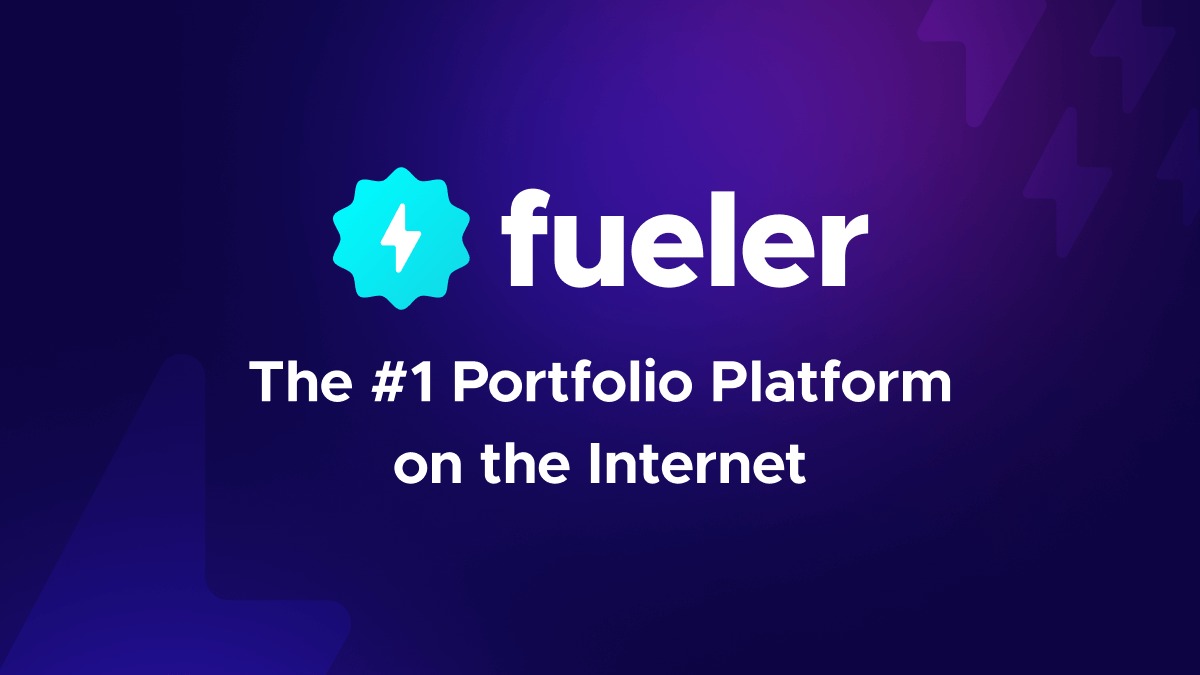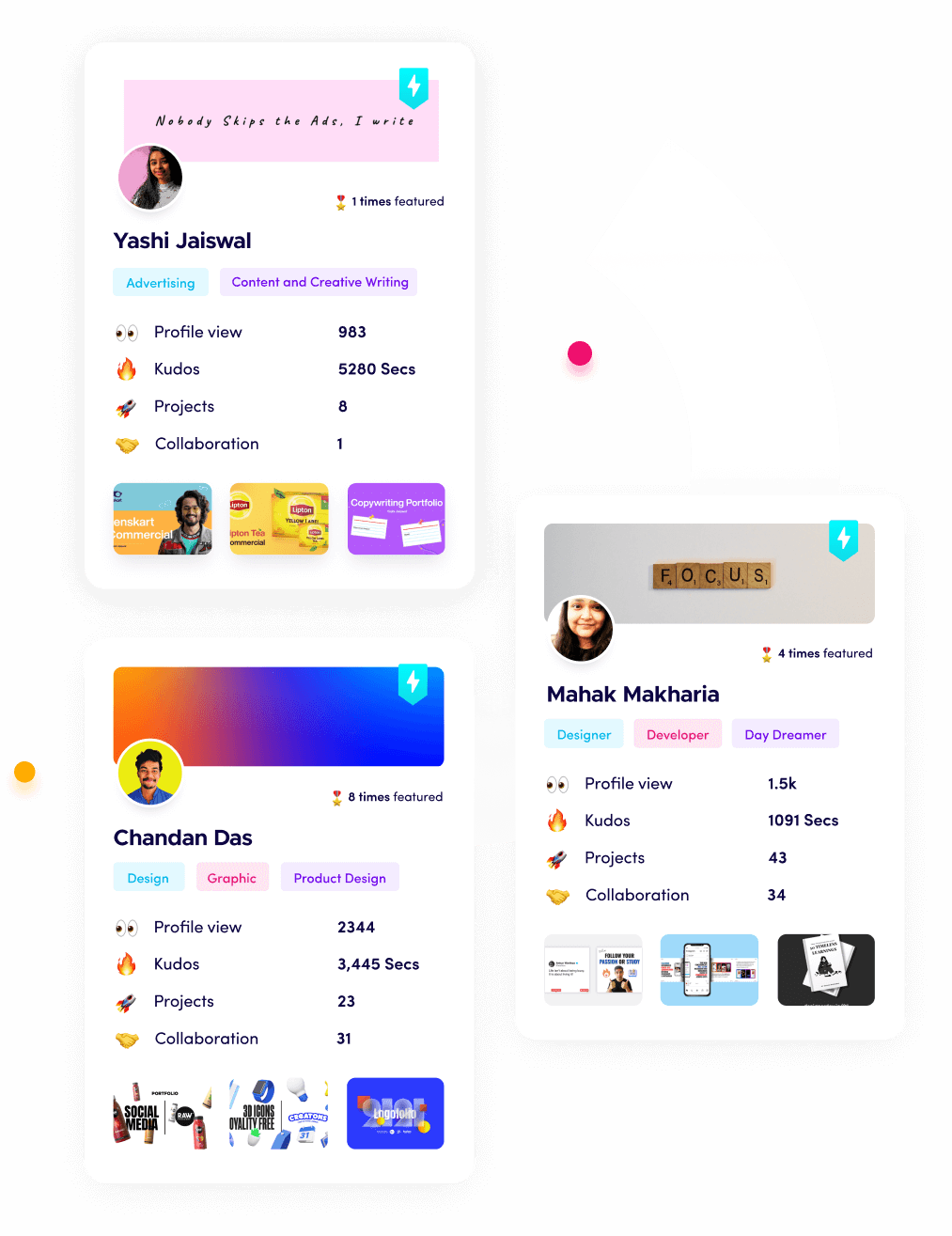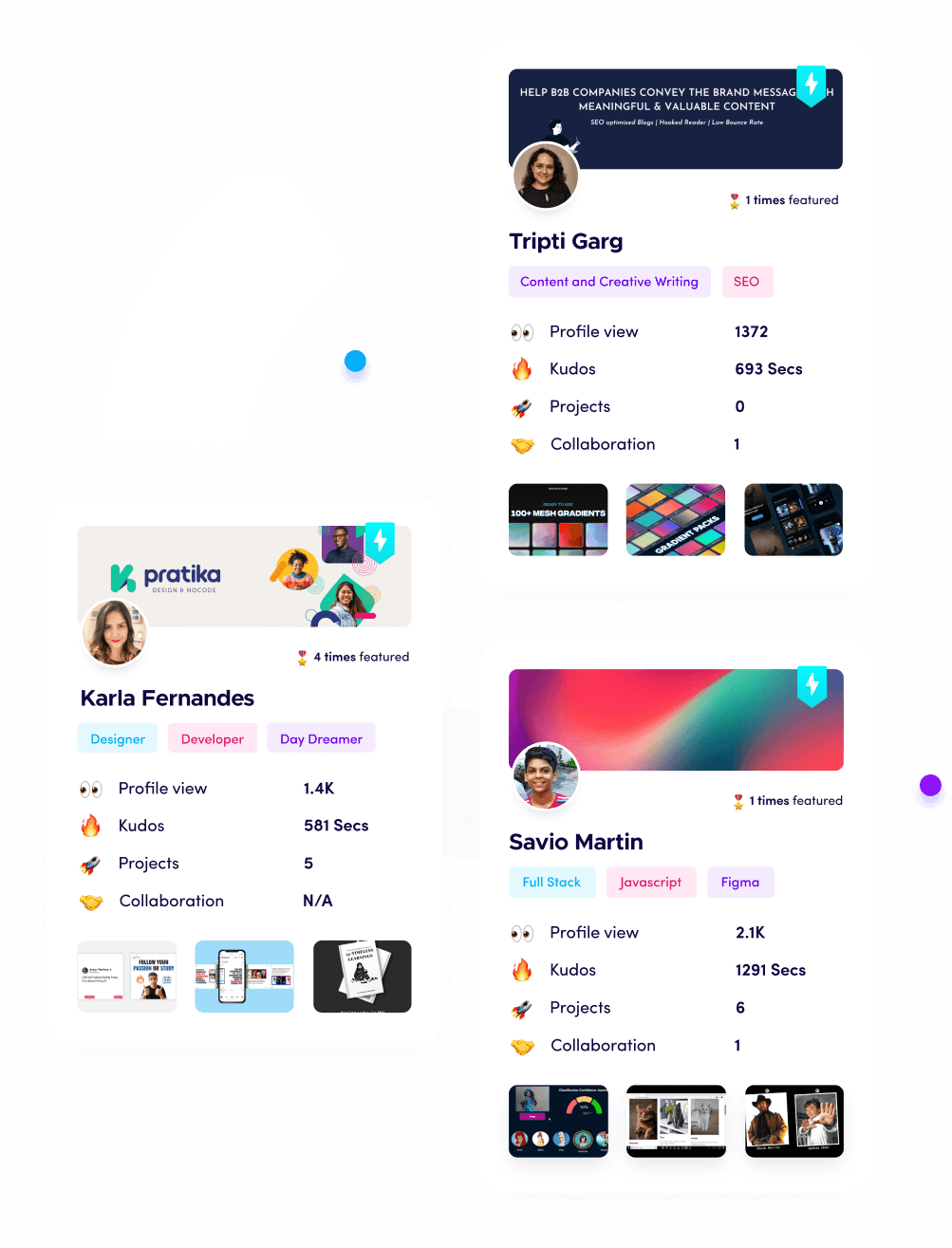Must-Have Projects for Your Digital Marketing Portfolio

Riten Debnath
15 Jun, 2025

Are you tired of being overlooked by recruiters and clients, even though you know you have the skills? In 2025, your digital marketing portfolio is your career passport. But not just any portfolio you need to showcase the right projects that prove your expertise, adaptability, and real-world impact. Let’s dive deep into the essential projects you need to get noticed and get hired.
I’m Riten, founder of Fueler a platform that helps freelancers and professionals get hired through their work samples. In this article, I’ll break down the must-have digital marketing projects that will make your portfolio stand out in 2025. Remember, your portfolio isn’t just a collection of projects — it’s your proof of skill, your credibility, and your shortcut to trust.
Why the Right Projects Make All the Difference
In today’s digital-first job market, recruiters and clients don’t just want to see that you can “do marketing.” They want proof that you can drive results in real-world scenarios. The projects you include in your portfolio are your evidence — they show your range, your ability to solve business problems, and your commitment to staying current with industry trends. Carefully chosen projects demonstrate your adaptability, creativity, and technical skills. They also help you tell a compelling story about your growth as a marketer.
When you curate your portfolio, think about the roles or clients you want to attract. Are you aiming for a job at a fast-paced startup, a big brand, or as a freelance consultant? Each audience values different skills, so your portfolio should reflect the work that matches your goals. The more relevant and recent your projects, the more likely you are to get noticed.
- Showcases your ability to deliver measurable business results, not just complete tasks.
- Builds instant credibility with employers and clients by proving your skills with real examples.
- Helps you stand out from generic resumes and portfolios by telling your unique story.
- Makes it easy for decision-makers to see your value and imagine you on their team.
1. SEO Campaigns with Real Analytics and Outcomes
Search engine optimization is a foundational digital marketing skill. Including a comprehensive SEO project in your portfolio shows you understand both the technical and creative sides of digital marketing. A strong SEO project doesn’t just mention keyword research — it walks the viewer through your entire process, from initial audit to measurable results.
Start by describing the client or business challenge: Was their website not ranking? Were they losing traffic to competitors? Then, detail your research process, including keyword analysis, competitor benchmarking, and technical site audits. Explain the on-page and off-page strategies you implemented, such as optimizing meta tags, improving site speed, and building backlinks. Most importantly, show the results with clear data: Did organic traffic increase? Did rankings improve for high-value keywords? Use screenshots of Google Analytics or Search Console to make your impact undeniable.
- Conducted a full SEO audit, identifying technical and content gaps.
- Researched and implemented targeted keywords for high-intent search terms.
- Built quality backlinks through outreach and content partnerships.
- Demonstrated traffic growth and ranking improvements with before-and-after analytics.
2. Paid Advertising Campaigns with ROI Analysis
Paid media is a fast-moving, results-driven area of digital marketing. A portfolio project in this area should demonstrate your ability to plan, execute, and optimize campaigns across platforms like Google Ads, Facebook, Instagram, or LinkedIn. Start by outlining the business objective: Was it to drive leads, boost sales, or increase brand awareness?
Describe how you set up the campaign, including audience targeting, ad creative development, and budget allocation. Explain your approach to A/B testing, bid management, and ongoing optimization. The most important part: show the numbers. Include cost-per-click, conversion rates, return on ad spend (ROAS), and any learnings that helped you improve the campaign. Visuals like ad screenshots and performance graphs make your work more tangible.
- Developed and launched multi-channel ad campaigns targeting specific buyer personas.
- Created compelling ad copy and visuals tailored to each platform.
- Managed budgets and optimized bids for maximum ROI.
- Tracked and reported on conversions, click-through rates, and cost efficiency.
3. Content Marketing and Blogging Initiatives
Content is the backbone of digital marketing. A strong content marketing project in your portfolio should go beyond just writing blog posts. It should show your ability to plan, execute, and measure a content strategy that drives business goals. Start by explaining the content challenge or objective: Was the goal to increase organic traffic, educate customers, or generate leads?
Detail your process for topic research, keyword selection, and editorial calendar planning. Show examples of your writing, design, or multimedia content. Most importantly, provide data on the results: Did your content increase website visits, boost engagement, or drive signups? If you collaborated with designers, videographers, or other marketers, highlight your teamwork and project management skills.
- Researched and developed a content strategy aligned with business goals.
- Wrote and optimized blog posts, guides, or ebooks for target audiences.
- Promoted content through SEO, email, and social media channels.
- Measured and reported on traffic, engagement, and lead generation.
4. Social Media Campaigns with Engagement Metrics
Social media is where brands build relationships and drive real-time engagement. A portfolio project in this area should highlight your ability to create, schedule, and analyze campaigns across platforms like Instagram, Twitter, LinkedIn, or TikTok. Start with the campaign objective: Was it to launch a new product, grow followers, or increase engagement?
Describe your content planning process, including how you chose themes, created visuals, and wrote copy. Show how you managed community engagement, responded to comments, and leveraged influencers or paid promotions. Use data to prove your impact: Share metrics like follower growth, post reach, engagement rates, and campaign ROI. Screenshots of posts and analytics dashboards add credibility.
- Designed and executed multi-platform social media campaigns.
- Created original graphics, videos, and copy tailored to each channel.
- Engaged with audiences, managed community feedback, and built brand loyalty.
- Tracked campaign performance using metrics like reach, engagement, and conversions.
5. Email Marketing Campaigns with Conversion Data
Email remains one of the highest ROI channels in digital marketing. A strong email project in your portfolio should show your ability to plan, design, and optimize campaigns for different stages of the customer journey. Start by explaining the business goal: Was it to nurture leads, promote a product, or re-engage inactive users?
Detail your process for segmenting lists, personalizing content, and setting up automation workflows. Show examples of your email designs, subject lines, and calls to action. Most importantly, provide data on open rates, click-through rates, and conversions. If you used A/B testing or automation tools, explain how you improved results over time.
- Planned and executed targeted email campaigns for lead nurturing and sales.
- Segmented audiences for personalized messaging and offers.
- Designed responsive email templates and compelling copy.
- Analyzed performance data and optimized for higher open and conversion rates.
6. Analytics, Reporting, and Data Visualization
In 2025, data-driven decision-making is non-negotiable. A great analytics project demonstrates your ability to set up tracking, interpret data, and turn insights into action. Start by describing the business question or challenge: Was the goal to understand user behavior, track campaign ROI, or identify new opportunities?
Show how you set up Google Analytics, Tag Manager, or other tools to capture the right data. Walk through your process for building dashboards, generating reports, and presenting findings to stakeholders. Most importantly, explain how your insights led to changes in strategy or improved results. Visuals like dashboards, charts, and annotated screenshots make your work easy to understand.
- Configured analytics tools to track key performance indicators.
- Built custom dashboards for real-time reporting and visualization.
- Conducted deep-dive analysis to uncover trends and opportunities.
- Presented actionable recommendations that improved campaign outcomes.
7. Marketing Automation and CRM Integration
Automation is a game-changer for scaling digital marketing efforts. A strong automation project should show your ability to design workflows, integrate CRM systems, and personalize customer journeys. Start with the business goal: Was it to improve lead nurturing, reduce manual work, or increase sales efficiency?
Describe the tools and platforms you used, such as HubSpot, Mailchimp, or ActiveCampaign. Walk through your process for mapping customer journeys, setting up triggers, and measuring results. Explain how automation improved efficiency, increased engagement, or drove more conversions.
- Designed automated email workflows for onboarding, nurturing, or win-back campaigns.
- Integrated CRM data to deliver personalized experiences across channels.
- Reduced manual tasks and improved response times through automation.
- Measured the impact of automation on lead conversion and customer retention.
8. Cross-Channel or Full-Funnel Campaigns
The most impressive portfolios show you can manage integrated campaigns across multiple channels. A cross-channel project demonstrates your ability to plan, execute, and measure campaigns that use SEO, paid ads, social media, email, and more. Start with the big-picture goal: Was it to launch a new product, enter a new market, or drive seasonal sales?
Detail your strategy for coordinating messaging, creative assets, and timing across channels. Show how you tracked performance at each stage of the funnel and optimized for the best results. Use funnel diagrams, campaign timelines, and multi-channel analytics to tell a compelling story.
- Coordinated messaging and creative assets across SEO, ads, social, and email.
- Managed campaign timelines and budgets for seamless execution.
- Tracked performance at each funnel stage, from awareness to conversion.
- Optimized channels based on data to maximize overall ROI.
Why Fueler is the Best Platform for Your Portfolio
If you want to showcase these must-have projects in a way that gets you hired, Fueler is your best option. Fueler lets you present real assignments, document your process, and highlight your results in a structured, professional format. Recruiters and clients can easily browse your work, see your skills in action, and reach out for opportunities. Assignment-based portfolios are the future of hiring, and Fueler is leading the way.
Final Thought
Your digital marketing portfolio is your most powerful tool in 2025. By including these must-have projects, you prove your versatility, creativity, and ability to deliver results. Keep your portfolio updated, data-rich, and focused on the roles or clients you want. The right projects will open doors, build your reputation, and accelerate your career.
FAQs: Must-Have Digital Marketing Portfolio Projects
1. What types of projects should I include in my digital marketing portfolio?
Include SEO campaigns, paid advertising, content marketing, social media, email marketing, analytics, automation, and cross-channel campaigns.
2. How do I show results in my portfolio projects?
Use metrics like traffic growth, conversion rates, ROI, engagement, and analytics screenshots to prove your impact.
3. Can I include mock projects if I have no client work?
Yes, create realistic mock campaigns and explain your strategy, execution, and expected outcomes.
4. How many projects should I include in my portfolio?
Aim for 6-10 diverse projects that showcase your skills, adaptability, and business impact.
5. What tools should I mention in my portfolio projects?
Highlight tools like Google Analytics, SEMrush, Facebook Ads Manager, HubSpot, Mailchimp, and Data Studio.
What is Fueler Portfolio?
Fueler is a career portfolio platform that helps companies find the best talents for their organization based on their proof of work.
You can create your portfolio on Fueler, thousands of freelancers around the world use Fueler to create their professional-looking portfolios and become financially independent. Discover inspiration for your portfolio
Sign up for free on Fueler or get in touch to learn more.


